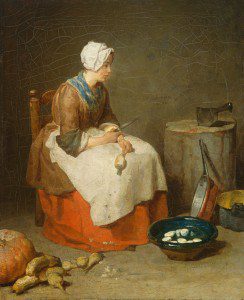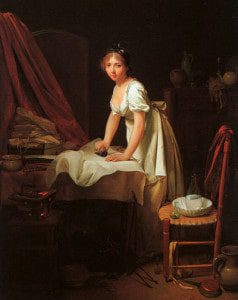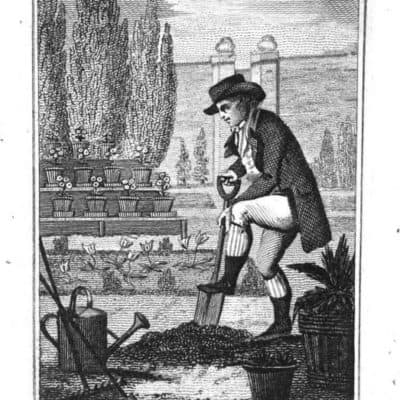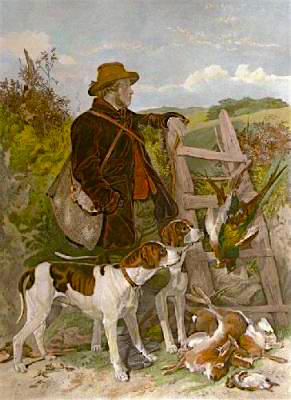Hi there my darlings!
There are so many different staff members always mentioned in Regency Romances that it is sometimes hard to keep track.
So this got me wondering…
How many staff were needed to keep a great country house and its estate running smoothly?
Let’s take a peek into one of England’s grandest country houses, Audley End House in Essex, to find out about the people who worked there.
In the late Victorian Era it was supported by nearly 30 servants within the house and service wing, while across the estate, it employed a further 80 or so staff.

THE COOK
Central to every household was its cook. The cook had the prime responsibility for the meals in the house. Their main duties were cooking the more complicated dishes and dressing all the dishes ready for serving. While doing the skilled work they would be assisted by the kitchen and scullery maids grinding, chopping, mixing and beating, and measuring out ingredients to be included in the dish.
THE MAIDS
The kitchen maids
The cook had two kitchen maids and a scullery maid to help them. The first kitchen maid would have prepared ingredients and cooked some of the simpler dishes. The second kitchen maid would have assisted the first as well as helping to clear up and clean the kitchen utensils. The scullery maid would have done all the more menial tasks such as peeling and chopping vegetables, gutting fish, plucking birds and washing up.

The laundry and dairy maids
There were just two laundry maids at Audley End. The first laundry maid managed the weekly cycle of laundering – soaking, washing, drying, starching and ironing – to ensure that there was always a supply of clean linen and that the family’s clothes and servants’ uniforms were ready when needed.
The dairy maid worked alone in the dairy, churning butter from the milk supplied daily by the Home Farm.

THE HOUSE STAFF
The butler
The highest ranking male servant combined the duties of house steward and butler. That meant he was in charge of the accounts, and the movement of staff from one residence to another, but also looked after the wine cellar and household plate (silver and silver-gilt ware, used on special occasions), and officiated at dinner, serving the wine and most important dishes.
The housekeeper
The housekeeper was the principal female servant, and reported directly to the Lady of the house. She carried the keys to the stores, paid tradesmen’s bills and kept the household accounts. She also supervised the female servants, ensuring they all performed their duties diligently. When the family was away, she would have acted as head of the household, keeping watch over the reduced workforce and showing visitors round.

The rest of the household
Other household servants included the lady’s maid, the second highest ranking female servant within the house. She attended to the Lady’s personal needs, dressing and undressing her, looking after her clothes and jewellery, and dressing her hair.
The Lord of the house was also likely to have had a personal attendant, either a valet or groom of the chamber. There were two footmen who would have helped serve meals and run errands around the house, such as answering the door to guests, taking messages to the kitchens and looking after the lamps and candlesticks.
Much of the real work in the house was done by the team of five housemaids. It was their job to keep the house clean and tidy. Morning duties could start as early as 4am so as not to disturb the family. There would be grates to clean, fires to light and rooms to be swept and dusted. Once the family was awake the maids would clean bedrooms, empty chamber pots and make sure the rooms were supplied with soap, candles, towels and other necessities. In the evening they prepared the bedrooms, turned down beds, filled jugs with water and took up hot water for the family and any guests to wash.

THE GARDENERS
Audley End employed about 15 staff in the garden. At the top of the hierarchy was the head gardener, whose status was on a par with the highest ranking servants in the house.
Beneath the head gardener were the under-gardeners – men who were making a professional career in horticulture. Alongside them were the jobbing gardeners, often described as ‘garden labourers’ or ‘spademen’, who carried out the main heavy tasks and worked at Audley End most of their lives. At the bottom of the hierarchy were a few so-called ‘weeding women’ and boys.

THE GAMEKEEPERS
To manage the estate for game and guard against poachers, they employed a team of nine gamekeepers in 1881 – two keepers and seven under-keepers. They were led by the head gamekeeper.
The gamekeepers’ main role was to protect game from both predators and poachers, and ensure there was a plentiful supply for the landowner and his shooting parties. The gamekeepers fought a constant battle against poachers, who often worked in organised gangs. Poaching was big business in the 1880s, with a regular market for illicit game served by unscrupulous dealers.
The gamekeeper, in short, was a policeman – the closest thing to a professional law enforcement official to be found in rural England.
THE STABLES
The coachman – the highest ranking of the stable staff – usually groomed the carriage horses, while the grooms would have looked after the riding horses.

THE ESTATE STAFF
The land steward
The most senior job on the estate was that of land steward, a position that carried great weight and respect. He managed everything that happened on the estate, including the woods, brickyard, stables and kitchen gardens, and would have been responsible for around 80–100 staff. He also collected rents and settled disputes between tenants. But his main task was to ensure that the 1,100-acre Home Farm made a profit. While the farm bailiff lived at the farm and dealt with all the day-to-day business, the land steward had to make the big decisions such as whether to buy new livestock, try out new machinery, and which crops to grow.
I’m sure there were many more as well!
Can you even imagine living in a house with that many people around on a daily basis?
Living there would have been like living in your own private village!
Although, I imagine, things were not idyllic for all the people living there, especially those under the stairs…
Written byEmma Linfield!

 Share this book
Share this book